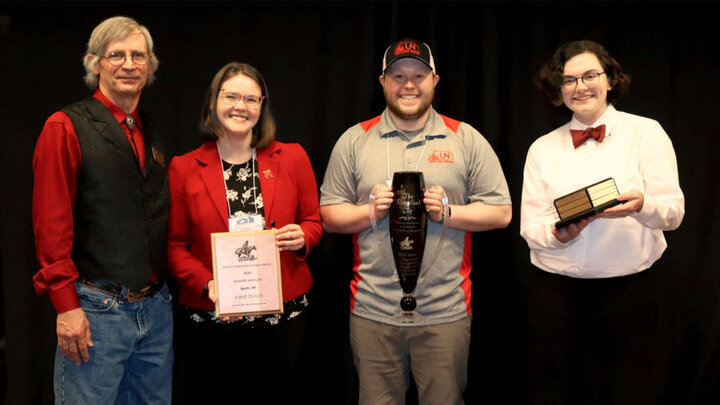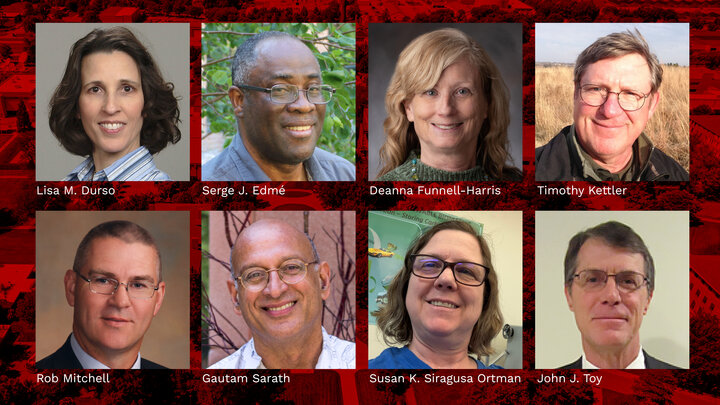For the second year, the University of Nebraska–Lincoln won the collegiate Rangeland Cup at the Society for Range Management annual meeting. The competition took place Jan. 29 in Sparks, Nevada.
The results were very close, with Chadron State College placing second and Brigham Young University third. The Nebraska team included fisheries and wildlife majors Caitlin Copenhaver, Jacob VanDress and Josie Ivy.
The Rangeland Cup consists of a research poster presentation in which students are given a range science-related prompt and then asked to find potential solutions.
“This year’s prompt was certainly tricky, but very fascinating as well,” Copenhaver said.
It required students to research novel technologies (specifically those developed or applied to range science within the past decade) and incorporate them into a research poster with a plan to mitigate the issues presented by climate change on rangelands. Following the development of the research poster, students practiced their presentation skills. Then, they presented their posters over three hours to a series of judges and visitors at the annual SRM meeting.
In their presentation, “Heterogeneity is Heterogenius! Using Spectroscopy to Measure Heterogeneity and Biodiversity in a Changing Climate,” the Nebraska team discussed a proposal to use heterogeneity, defined as the variability in various ecosystem factors, as a metric for judging rangeland health and deciding on the best management practices in the face of climate change.
The team explained how climate change on the range poses a severe concern for preserving heterogeneity. The myriad adverse effects of climate change, such as the loss of biodiversity, the spread of invasive species, and woody encroachment, can potentially decrease heterogeneity and ecosystem resilience. A decrease in heterogeneity will also lead to a decrease in range capacity for carbon sequestration, thereby compounding this already serious problem and an ability to fight it effectively. By combining multiple technologies, such as spectroscopy or aerial systems, with a traditional boots-on-the-ground approach, the team illustrated how this could increase understanding of how best to manage rangelands to promote heterogeneity, combat climate change and increase producers’ economic gains.
“Our team is extremely excited about the win, and we are very grateful to everyone who provided us with feedback throughout this process, especially to our UNL Range Club advisers Cheryl Dunn and Nic McMillan,” Copenhaver said.
Dunn is a research manager and herbarium curator and McMillan is an assistant professor of range and forage sciences. Both are members of the range, pasture and forages group in the Department of Agronomy and Horticulture.
Other Range Management Club members including grassland systems majors Michelle Henkel, Makennen Havlat and Abby Stalder also attended the SRM meeting. Students networked with professionals, listened to session and keynote speakers, and competed in various contests with students from across North America.
The Nebraska team including Caitlin Copenhaver (from left), Josie Ivy and Jacob VanDress present their poster to judges and attendees during the Rangeland Cup competition Jan. 29 at the SRM annual meeting. Caitlin Copenhaver (from left), Jacob VanDress, Josie Ivy and Abby Stalder network with professionals, listen to session and keynote speakers, and compete in a variety of contests at the SRM annual meeting held Jan. 28–31.



